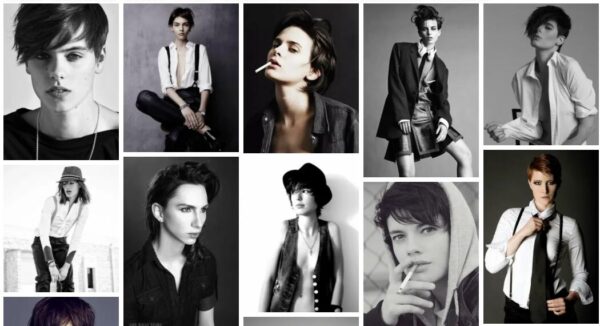
Meaning of Androgynous
The etymology of androgynous leads us first to the Latin language and then to the Greek, where it comes from a compound word that combines the notions of “male” and “female”. The first meaning of the term that the Royal Spanish Academy (RAE) mentions in its dictionary, in this framework, refers to the adjective hermaphrodite: that it has both sexes.
The androgynous condition is called androgyny. This quality, in the human being, is related to showing external features that do not coincide with the characteristics of one’s sex. A man who has long hair, plucks his eyebrows, and paints his lips can be described as androgynous, since his physical appearance is associated with a woman and not with male aesthetics.
Plato was the one who used this idea for the first time in “The Banquet”, mentioning beings who had two sexes in their body. Through a thunderbolt, Zeus split those sexes and, in this way, the androgynes “lost” their other half. From this concept, the position was developed that maintains that people are in search of that other half when trying to form a couple.
In recent years, several androgynous models have become famous for how striking it is that a person can wear clothes intended for both sexes. These are individuals who, with the naked eye, find it difficult to determine whether they are men or women. In this duality lies its popularity in the fashion industry. It must be borne in mind, however, that androgynous subjects are often discriminated against because they do not comply with the stereotypes of men and women.
Despite this discrimination, which in the worst cases can reach limits of extreme violence, not everything is negative for androgynous people: the luckiest people earn fortunes for their work on the catwalks and dazzle readers of fashion magazines with their indecipherable aspects of sex.
One of the most recognized cases is that of the famous Strav Strashko, a model that has posed for the most important brands, always as a woman, despite not having undergone any operation. They discovered it at the age of sixteen and since then it has used its particular beauty to demonstrate that the walls that divide men from women are only one of the many social impositions.
Machismo leads us to think of that fictional world made up exclusively of heterosexual beings, who compulsorily group themselves in pairs and dedicate their lives to procreation: the man is rude and goes looking for money to buy food; the woman is fragile, and for that reason she waits for her gentleman in the house, while she cleans and cooks for him and his descendants. Being born indefinite is not exactly a blessing against those who carry those archaic ideas, but apparently there is a light of hope that can place them out of the reach of the clubs.
It is important to note that we should not confuse the terms androgynous and androgen: the latter serves to refer to the hormone that promotes the emergence of the secondary sexual characteristics of man. As is often the case in these cases, there are many texts in the media in which they are used incorrectly, as if they both meant ” external features that do not clearly respond to the person’s sex.”
If we refer to the etymology of both words, we see that androgynous is formed by the Greek voices corresponding to “male” and “female” (andrós and giné, respectively), while androgen combines “male” with the suffix -geno, which indicates “that produces or generates”.
